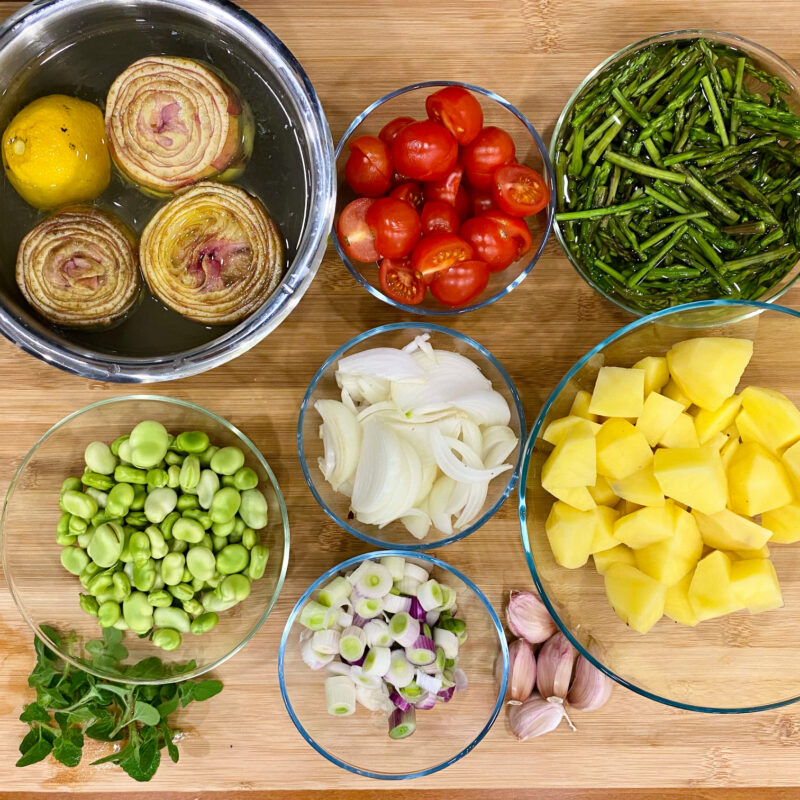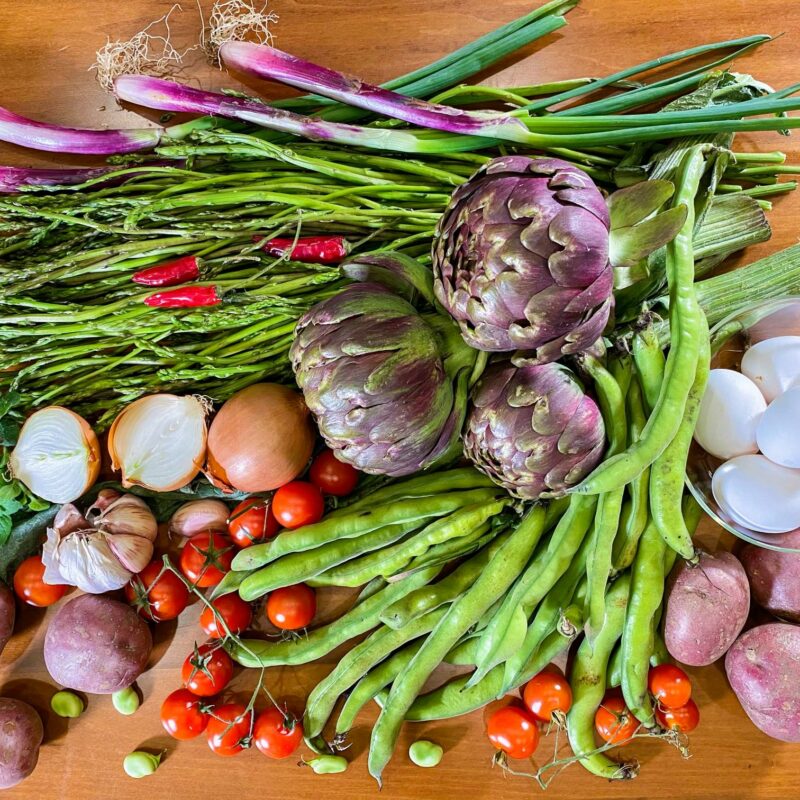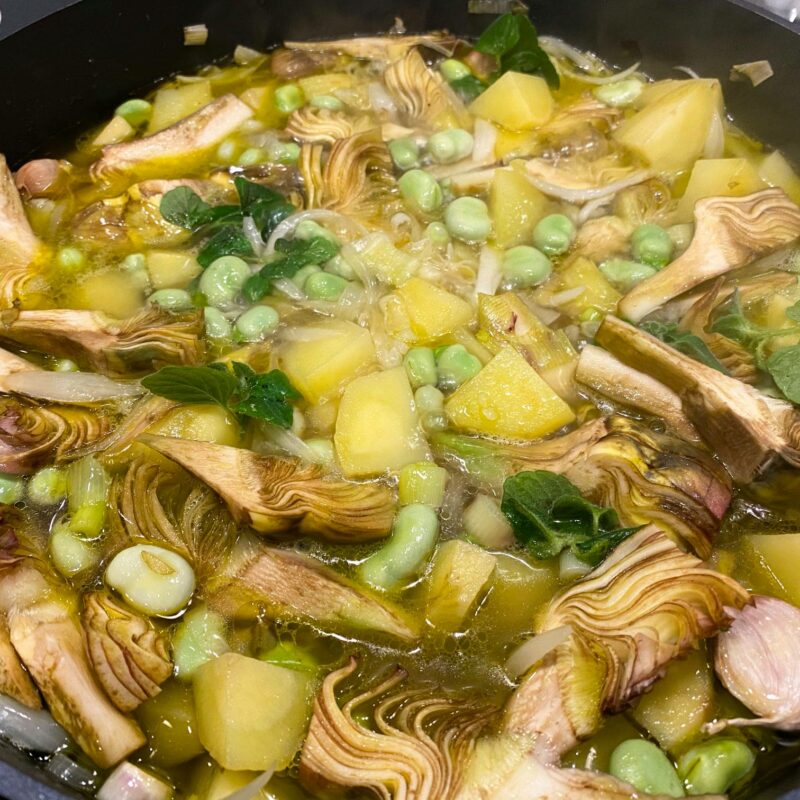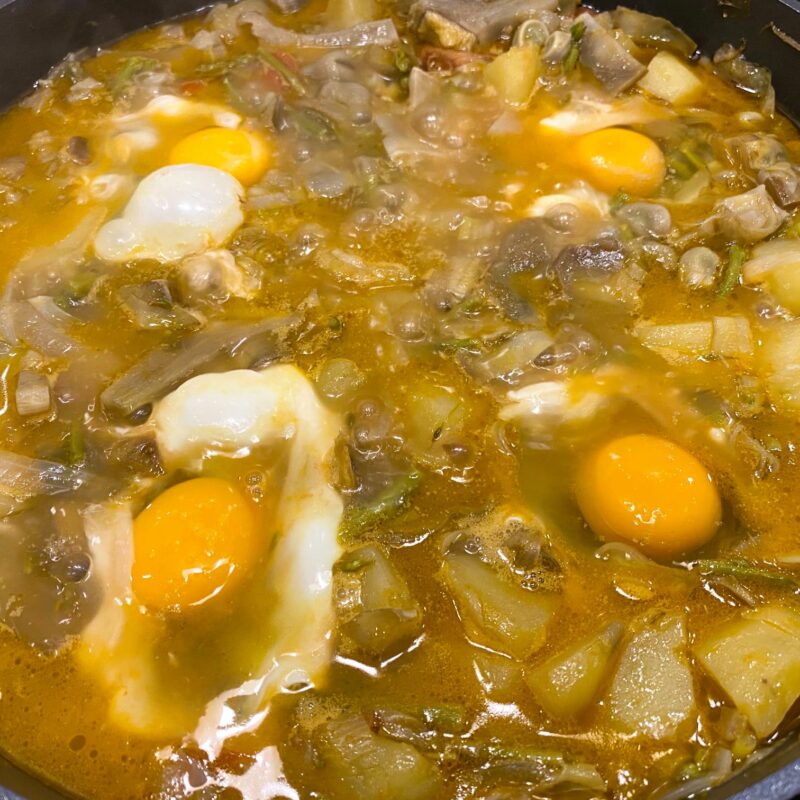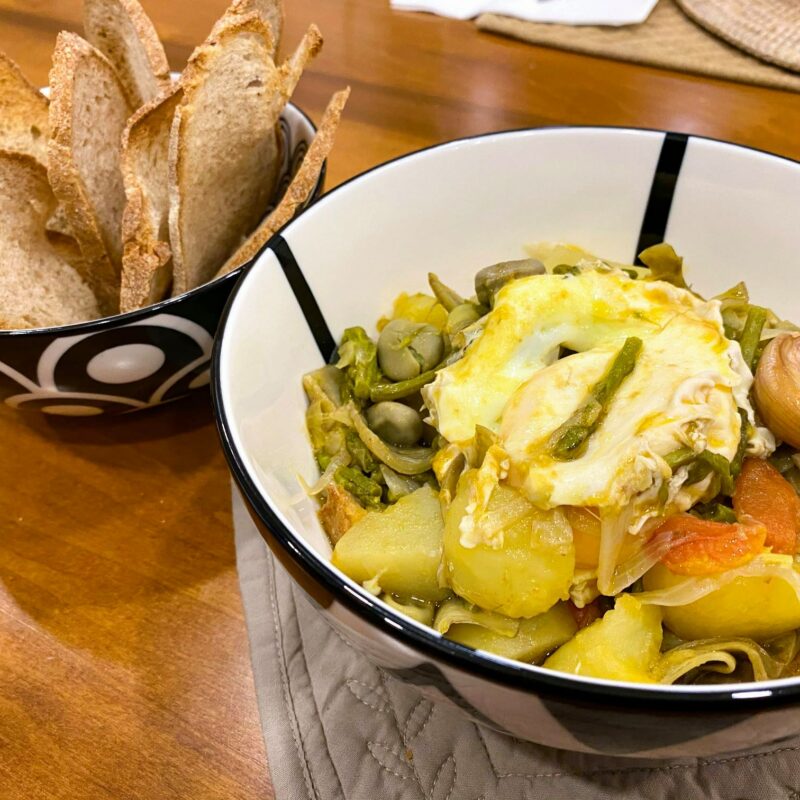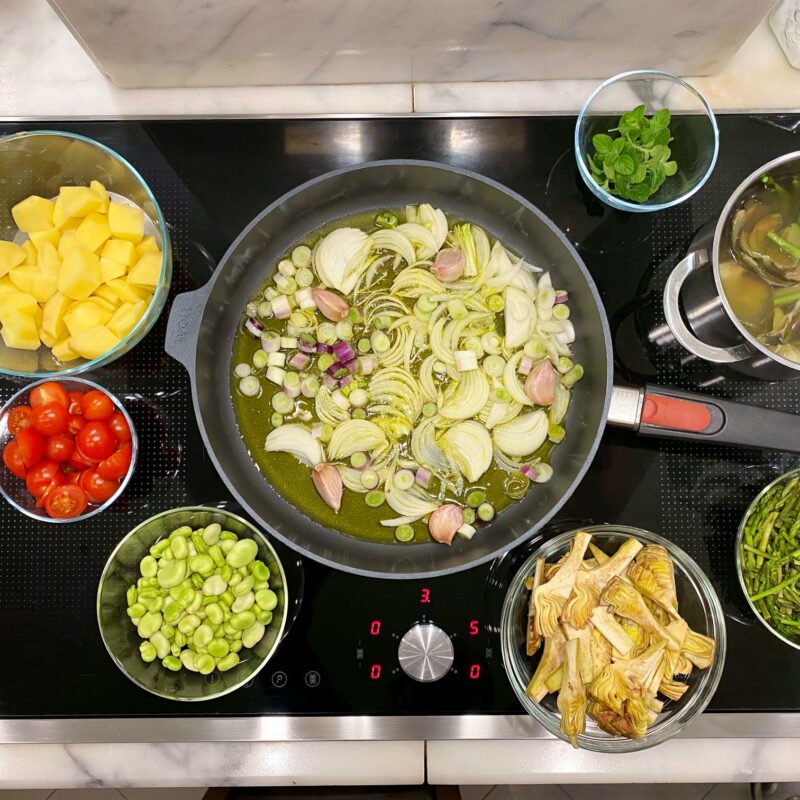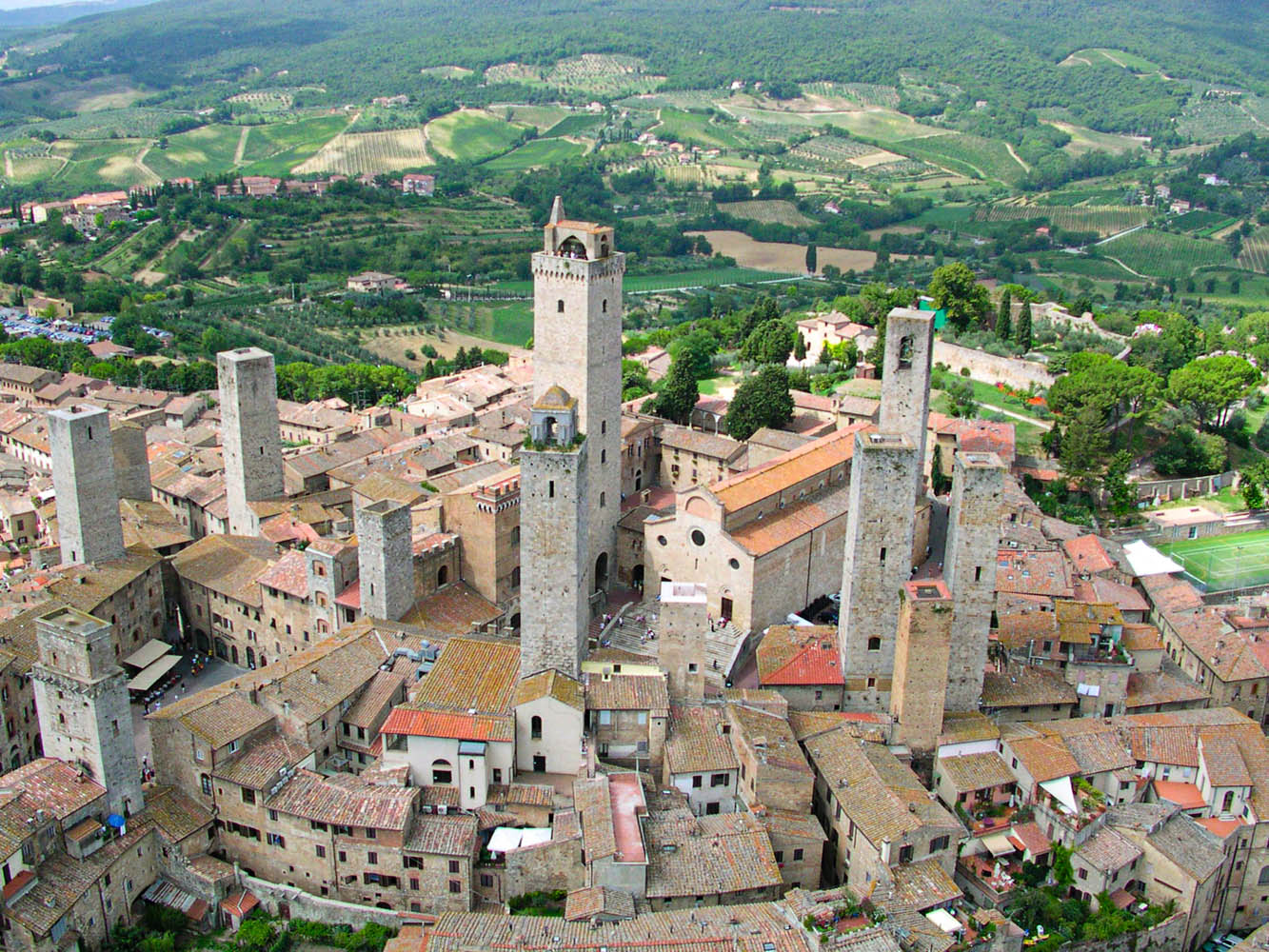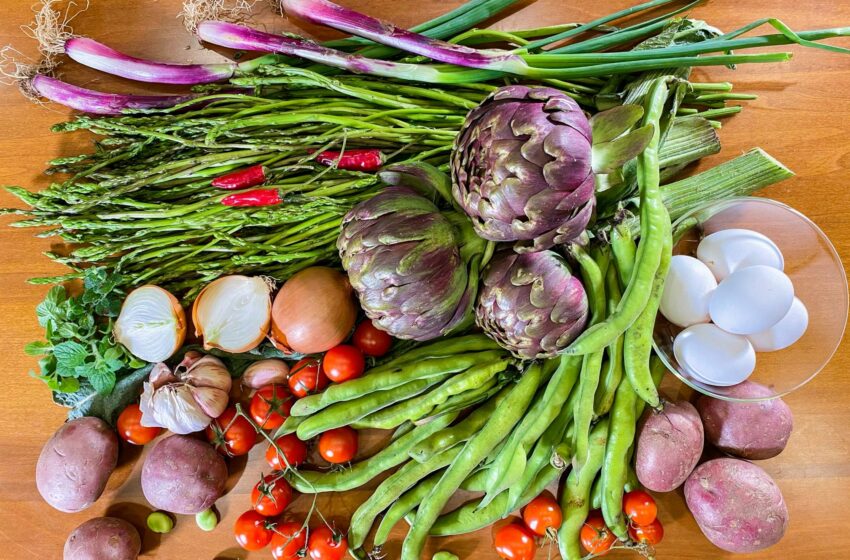
The “scafata” of Tarquinia
In Tarquinia, in the province of Viterbo, the arrival of Spring, increasingly earlier than before, is inaugurated with a typically agricultural dish from the Maremma Laziale region: the “scafata,” the lunch that farmers used to cook in the fields where they worked, with the products of their labor. A dish entirely vegetarian except for the egg, which is not essential, composed of wild or cultivated spring vegetables from the area. In fact, the recipe does not include animal fats, but only extra virgin olive oil, although, as always, there can be different interpretations depending on the area or the traditions of each family.
It is one of the many variations of “acquacotta” made based on the seasonality and availability of vegetables and plants. The term acqua-cotta indicates, indeed, cooking in water only, as it was originally done, with the addition of raw oil only at the end of boiling.
In passing down the recipe, someone introduced a brief sauté, which then remained in tradition. Nevertheless, it remains a digestible and delicious dish that should not be forgotten by the new local generations.
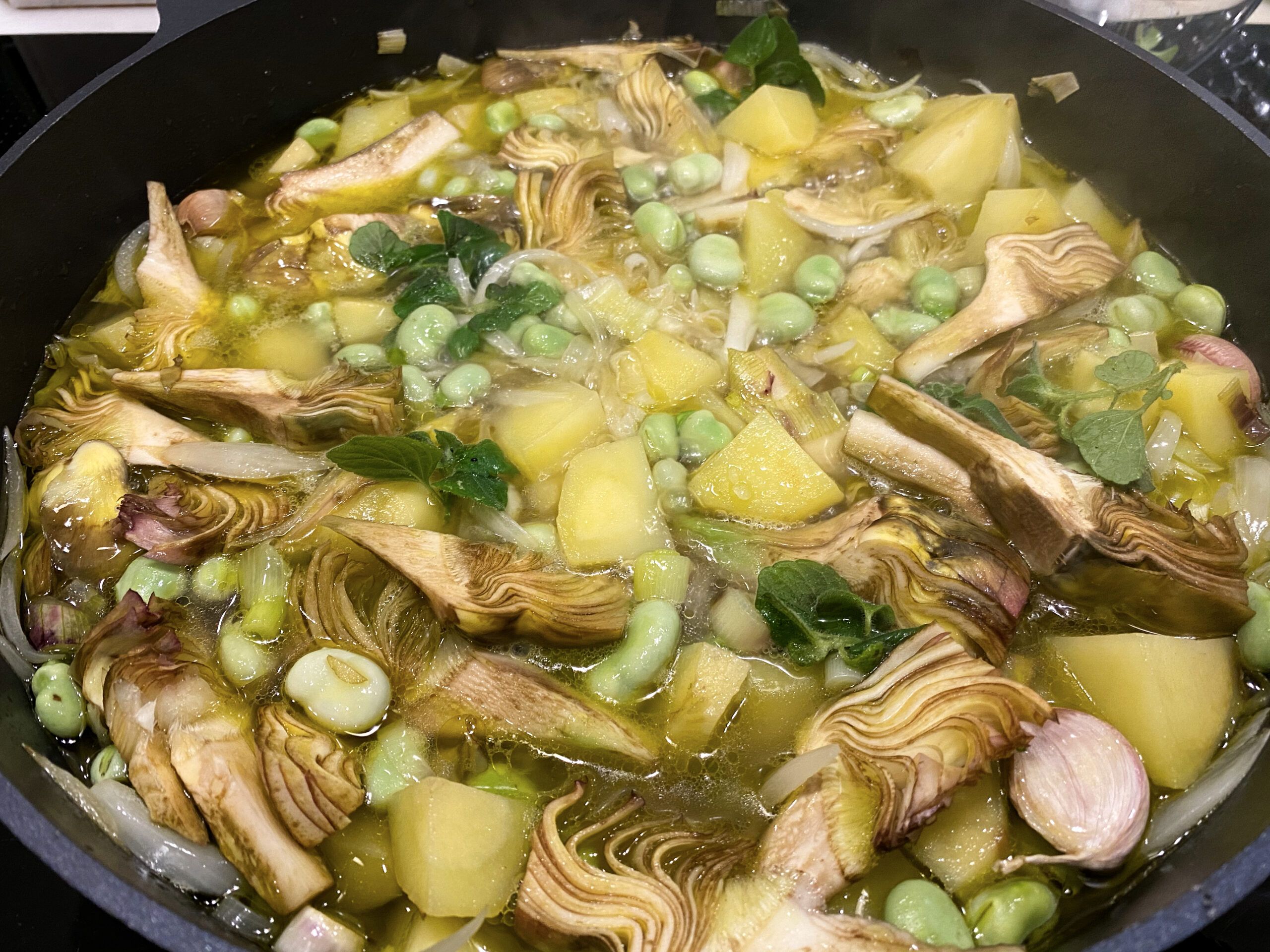
Ingredients: wild asparagus, artichokes, fava beans, onions, cherry tomatoes, potatoes, garlic, mentuccia (not Roman mint), chili pepper, and eggs (the last two are optional), and, as in all “acquacotte,” stale homemade bread.
Procedure:
Clean and cut all the vegetables, keeping the asparagus stalks and the intermediate leaves of the artichokes, which should be boiled separately.
In a pot, add extra virgin olive oil, sliced onions, and a few cloves of garlic with the peel.
Sauté the onions over moderate heat, add diced potatoes and brown them so they don’t fall apart during subsequent cooking. Then, add the artichokes and fava beans, which require a longer cooking time, mentuccia, a small piece of chili pepper, and the boiling water from the asparagus stalks and artichoke leaves to cover the ingredients.
After about 10-15 minutes, add the asparagus tips and halved cherry tomatoes, and again, the water from the vegetables.
When cooking is complete, about 40-45 minutes in total, you can add an egg for each diner to cook “poached,” meaning well-cooked on the outside but almost raw inside so that it presents with its beautiful white “shirt” (the egg white) protecting the yolk, which should only be broken while eating… with a fork, not with a spoon, as per the local customs.
A portion of the broth obtained is used to wet slices of toasted or stale bread, which are placed at the bottom of the plate or, as some prefer, served separately.
A drizzle of raw extra virgin olive oil is essential, preferably very fruity, as it gives a more intense aroma to the dish in which the flavor notes of each ingredient are enhanced.
Enjoy your meal!
Gallery:

Si occupa di cucina e di tradizioni, con un pensiero sempre sensibile verso le tematiche della sostenibilità sia ambientale che economica.
Leggi in:
![]() Italiano
Italiano





